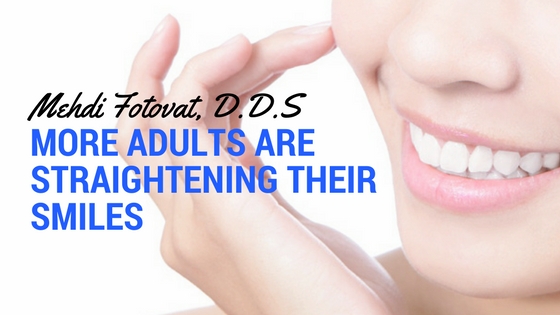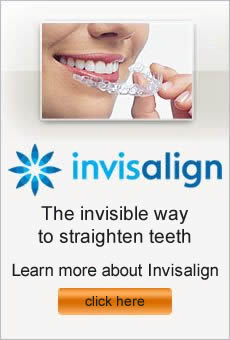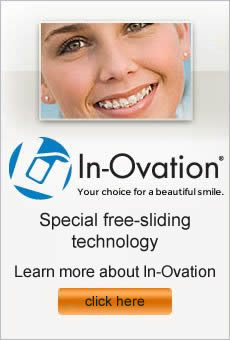The sun can trigger unpleasant side effects such as cold sores and fever blisters. Caused by herpes simplex virus type 1 (HSV-1), cold sores and fever blisters are transmitted from person to person by saliva, direct skin contact, or through dirty utensils or cups. With cold sores, you generally develop clusters of tiny blisters on or around the lip. Most people are exposed to HSV-1 before age 10. After the first infection, the virus remains inactive until stress, illness, or sun exposure causes a new outbreak.
During the first exposure, you may have headache, nausea, fever, and/or vomiting. Patients may also have painful swelling and open mouth sores. Most of the time, cold sores or fever blisters appear on the edges of your lips. Usually, these outbreaks start with tingling or burning followed by swelling or redness. One or more blisters will typically appear within 24 to 48 hours.
Initial symptoms can last for 7 to 14 days. When the cold sores or blisters reappear, they generally crust over in about four days and then heal within 10 days. Keep the area clean and apply topical medication to lessen symptoms as well as promote healing. For those who experience frequent reoccurrence, your primary care physician can prescribe medicines that may shorten the lifespan of the symptoms.
Preventing a first infection for loved ones involves making sure that no one with an active fever blister kisses your kids or other family members. Applying sunscreen can help protect your lips from cold sores brought on by too much time in the sun.


What treatment options are available to adults?
There are more aesthetically-pleasing yet effective choices available today than ever before. We offer state-of-the-art treatment options such as Invisalign, the virtually invisible straightening system, and Clear In-Ovation braces, brackets that use high translucency and rhodium-coated clip technology, making the braces appear less visible. We also specialize in traditional metal braces. Today, this style of bracket is also available in a“tooth colored” material.
What are the benefits of adult orthodontic treatment?
1. A confident smile: There is nothing like wanting to show off your smile. Misaligned teeth cause many adults to feel self conscious about their smile
2. Healthier gums: Food is more likely to get trapped and cause plaque buildup, which is harder to brush and appropriately floss, increasing the chances of gum disease. Further, crowded teeth can cause redness and swelling of the gums.
3. Stronger teeth: First, teeth are constantly put under pressure and crooked teeth can undergo more wear and tear than a straight bite. Second, a misaligned bite can mean uneven force on your jaw causing damage and/or pain. Last, trapped food in misaligned teeth can cause the tooth decay.
4. Overall Improvement of health: A misaligned bite can make it more difficult to fully chew food, causing gastrointestinal problems. In addition, inflammation of the gums has been linked to heart disease and diabetes.
At our practice we know that your time is valuable. Many adults think that they don’t have time in their busy life to undergo treatment. We respect that and will work with you to design a treatment plan that is quick, comfortable, and fits into your schedule.
Have you hesitated to take the first step towards achieving the straight smile that you’ve always dreamt of? The answer is clear. Scheduling a complimentary consultation is the first step towards a beautiful, healthy, attractive smile. Call us at: 818-980-5300 or request an appointment here.
We look forward to meeting you!
Chances are you’ll be under and orthodontist’s care for a number of years, so you’ll want to choose the right doctor. Also, a very visible part of your body is being treated and you want the highest level of skills.
Follow these guidelines in your search for an orthodontist.
Training
Orthodontics is a specialization within dentistry, which requires a degree in dentistry plus an extra 2-3 years in an accredited orthodontic program. Completing the residency program provides an orthodontic specialty certificate and often a master’s degree. Ask if the doctor you are considering is a specialist with the required training. You can verify this information by checking to see if the doctor is a member of the American Association of Orthodontics (AAO).
Certification
Many qualified orthodontists are certified through the American Board of Orthodontics (ABO), which orthodontists voluntarily join in order to have their skills and competency evaluated. This certification demonstrates the orthodontist’s dedication to excellence and continued proficiency in this specialization.
Referrals
Your general dentist can be a great resource for referring you to a qualified orthodontist. Ask your dentist about a specialist in your area who has a good reputation.
Recommendations
Friends, neighbors and coworkers are all good sources for orthodontist recommendations. Take note of those you know with braces or whose children have braces, and ask them about their experience with that provider.
Research
The internet, magazines and newspapers are good places to look for ratings of orthodontists. Find specialists in your area and scheduled consultation appointments to make sure it’s the right fit for you.
Moody teenagers can be hard to please, and sometimes finding out that they need braces can send them reeling. If you have a teen who needs orthodontic treatment but is fighting the idea of having a mouth full of metal, consider the latest innovation called Invisalign.
This revolutionary treatment involves wearing customized clear plastic aligners over your teeth. About every two weeks, you’ll transition to a new set of aligners in a series designed to gently move teeth into better positions. Invisalign corrects a variety of problems like overcrowding, gaps, crooked teeth, and bite issues.
If you’ve already heard about Invisalign, it may have been associated with adults. Although many adults love this treatment method, teens can enjoy it just as much. Others hardly notice you’re undergoing treatment and your self-esteem is not negatively impacted. It’s easy to smile your way through the process and end up with a perfect smile when treatment is done.
What are some aspects about Invisalign that make it such a low-stress orthodontic alternative?
• Traditional braces are unsightly and bulky, but Invisalign aligners are lightweight and practically invisible. Nothing beats Invisalign for the most aesthetic approach to treatment.
• It’s easy to keep your teeth and gums clean since the retainers are removed for brushing and flossing. Normal dental hygiene tasks are possible with this treatment method.
• There are no diet restrictions since the aligners are removed while eating. Teens can enjoy their favorite foods without being hampered by rules.
• No worrying that food is stuck in the metal brackets and wires of traditional braces.
• Emergency visits to the orthodontist are eliminated since there’s no chance of breaking a bracket or having a wire stabbing you in the mouth. Invisalign even provides extra retainers if one is lost to ensure uninterrupted treatment.
• The pain associated with traditional braces is not a factor with Invisalign, which uses gentle movement to reach your smile goals.
• Treatment time is typically not as long with Invisalign compared to traditional methods, with the average patient reaching their end goal in less than 18 months.
Orthodontic treatment is a solution for a variety of dental issues. Your smile may not only look like it could benefit from wearing braces, but your oral health might also benefit as well. Often, a healthy mouth includes teeth that are aligned properly to allow for good cleaning and maintenance. It’s helpful to identify orthodontic problems early so that action may be taken at that time or planned for in the future.
What are some signs that you might benefit from braces? Here are some common indicators to help you recognize when it’s time to make an orthodontist appointment for you or your child.
The most common reason that patients visit the orthodontist is for teeth that are too crowded. It indicates that there is not enough space in the mouth to fit all the teeth. Therefore, the teeth crowd into each other and become crooked. Crowded teeth can be difficult to clean and usually worsen over time. Tooth decay, gum disease and bad breath can all result. Orthodontic treatment straightens the teeth and helps avoid pain and oral health problems.
Another popular reason for orthodontic treatment is a problem with the bite. There are several types of abnormal bites that can usually be treated with braces:
• Overbite – When the front upper teeth overlap the front lower teeth, it’s called an overbite. It can be very noticeable and embarrassing, and increases risks for trauma to the front teeth.
• Underbite – An underbite occurs when the upper front teeth are aligned behind the lower front teeth. It is often an indicator of disproportionate jaw size, causing imbalanced facial appearance, difficulty eating, or accelerated facial aging.
• Cross bite – An abnormal bite in which the upper tooth is behind the lower opposite tooth is called a cross bite. It may lead to excessive tooth wear or fracture, gum recession, or asymmetric jaw growth.
• Open bite – When the bite doesn’t allow the front teeth to touch at all, it results in an open bite. Lisps and trouble biting or eating may result.
If you have any of these bite issues or teeth crowding, schedule a visit with an orthodontist to see if it’s time for treatment.
If your smile makes you unhappy because of problems like crooked teeth or a misaligned bite or large gaps, you may be anxious to correct your smile with braces. There are numerous options available for braces today such as traditional metal braces, ceramics, Invisalign and more. Once you and your orthodontist decide which treatment is best for you, it’s important to reserve time to repair any dental issues that might affect the success of your orthodontics before you get started.
Schedule an appointment with your dentist for a thorough checkup and professional cleaning prior to getting braces. If any of your teeth have decay that requires dental fillings, now is the time to have them done. You don’t want any extra teeth sensitivity due to decay, and having fillings completed may improve the fit and comfort of your braces. Also, it’s easier on both you and the dentist to perform the work without braces in your mouth.
Chips or cracks on your teeth should also be repaired at this time. You might need a dental crown or cap to best correct your problem. Have your dentist make the right corrections before you begin orthodontic treatment.
Wisdom teeth are a common culprit for problems with the spacing in your mouth. If you have wisdom teeth that have already erupted, it’s easy for your dental professional to tell if they should be extracted to achieve your ideal smile. If your wisdom teeth are impacted, it’s likely they should be removed prior to orthodontic treatment so that the process isn’t later ruined by your wisdom teeth coming in.
A professional teeth cleaning is an important step before getting braces. Brushing and flossing alone usually isn’t enough to eliminate all of the plaque buildup, tartar and bacteria that has accumulated on your teeth. Scaling and polishing is often necessary to make your teeth the best they can be prior to beginning orthodontic treatment. Even if you opt to go with Invisalign, your smile will look and feel better after a professional cleaning.
Once you have visited your dentist and had any necessary procedures completed, you can return to your orthodontist to begin your journey to a beautiful smile.




